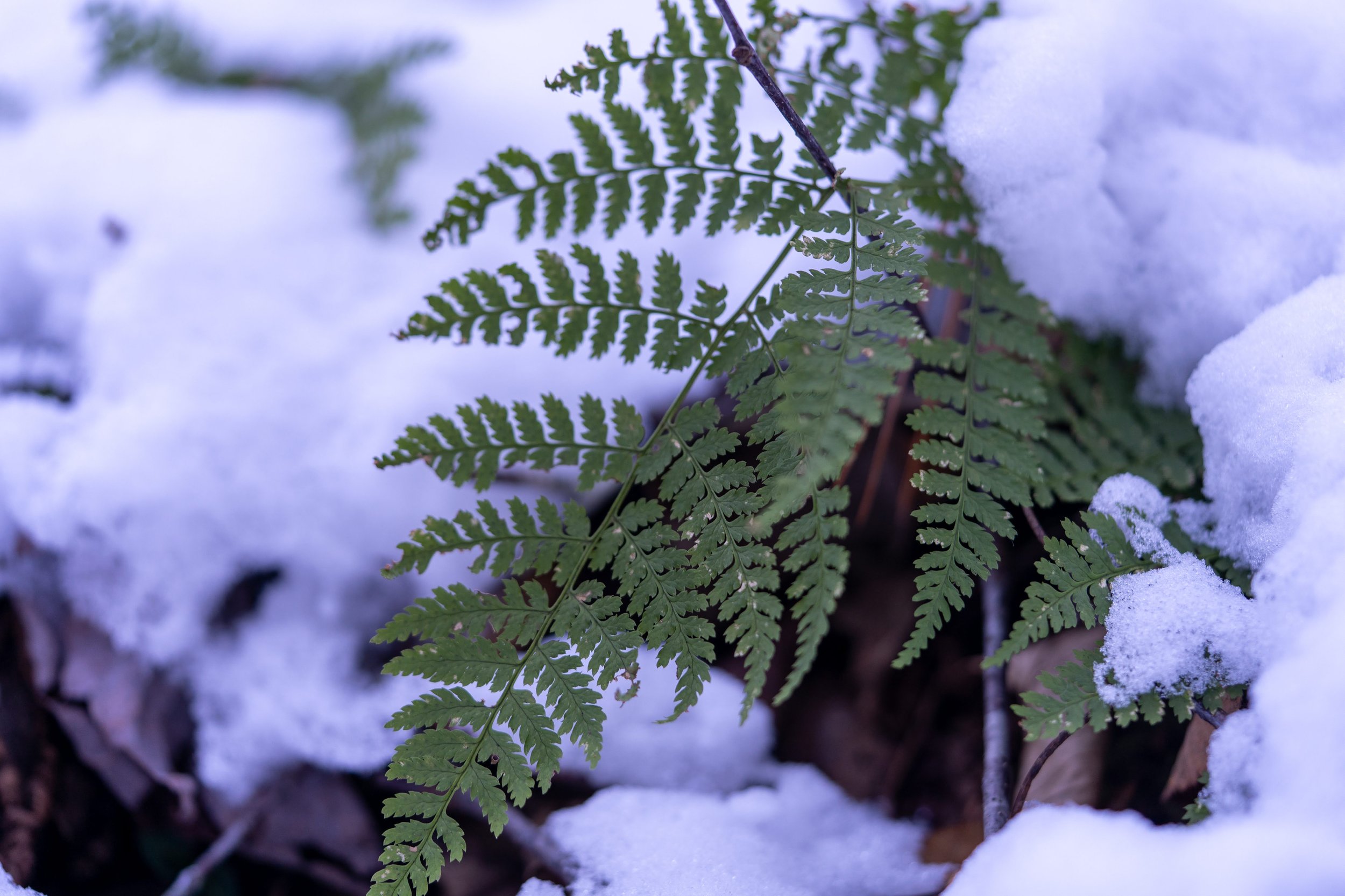It's Fern-ally Time to Explore Winter Flora!
Through the cold months of winter, seeing the shades green through nature is a driving force in keeping us sane until springtime. One of these main agents in providing a variation in color would be ferns. Ferns are vascular plants that reproduce via spores rather than seeds. These spores can travel vast distances before they land in their new habitat, creating a wide range of dispersal. While not all ferns can survive the cold winters, there are a few still left near our campus that can withstand the colder temperatures. Our two most spotted ferns at BRDC are the Christmas Fern (Polystichum acrostichoides) and the Evergreen Wood fern (Dryopteris intermedia)).
Evergreen Wood Fern
Evergreen Wood Ferns are apart of the family Dryopteridaceae which encompasses all wood ferns. In this family, evergreen wood ferns possess a unique feature of having a hairy stipe and rachis. The stipe is referring to the main stem section that occurs between the roots and the start of the leaf tissue. The rachis is the section of the stem that is has leaf tissue. As the name suggests, evergreen wood ferns got their name from their ability to retain their pinnules or ‘leaves’ all winter. These pinnules have a bright green color to them.
Christmas Fern
Christmas Ferns are also apart of the family Dryopteridaceae. They are also evergreen, which is why they are named after Christmas. Unlike the evergreen wood ferns, Christmas ferns do not have a hairy stipe or rachis. Instead, they have a scaly stipe. Their pinnules are a dark green with a satin finish. This dark color tends to hide in the mist of more brightly colored flora during the warmer months of the year, but during the winter time it stands out against decayed plant matter. While most ferns have spores all over the underneath of their fronds, Christmas ferns only have spores on the underneath of their top pinnules.
Spotting the difference between these two ferns might be obvious now, but in the field fern identification is a struggle to most beginners. If you ever find yourself in need to fern identification help, the iNaturalist app will become your best friend. This all encompassing nature identification app uses photos of flora and fauna to identify species. This app is a great tool for citizen science, so even if you aren’t specifically interested in ferns, you can use this platform for many other naturalist inquiries.
I know that during the colder months of the year people tend to stay inside, but finding winter ferns in your area is just one of the many reasons to get outside this winter.

